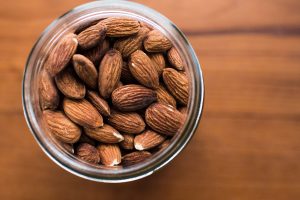
Over the past few years we have seen plenty of health trends appear. One of the major fads is the boom in consumption of almond milk. In the last two to three years, top manufacturers have been posting roughly 50 percent gains. Consumers of almond milk are aware that the liquid probably contains some water, but how much of your almond milk is actually made from almonds?Based off of a class action lawsuit vs Blue Diamond Growers, allegedly their almond milk contains just 2% almonds.
This a false advertisement lawsuit was brought on plaintiffs Tracy Albert and Dimitrios Malazianis who argue that Almond Breeze made by Blue Diamond has far less almonds than then what the consumer is lead to believe based on the packaging of the product. Within the lawsuit it states that “upon an extensive review of the recipes for almond milk on the internet, the vast majority of the recipes call for one part almost and three or four parts water, amounting to 25-33% of almonds.” The suit does not state that average percentage a consumer would expect for purchase. According to Tracy and Dimitrios the packaging of Almond Breeze is immensely deceiving. In the lawsuit they state that the pictures of almonds and the catch phrase “made from real almonds” insinuates to customers that they are purchasing a product made of mostly almonds. Other allegations are being said that consumers are allegedly lead to believe that it is a healthy product.
In the United States, Blue Diamond does not list what percentage of Almond Breeze is made from almonds, but on a U.K. Almond Breeze website it does only state 2%, according to FoodNavigator – USA. Typically, U.S. lawyers in the past have targeted almond milk companies for the usage of the term ‘milk’ to describes a non-dairy beverage. But the issue of the amount of almonds in almond milk has come up in the UK and its ASA (Advertising Standards Authority) stated “We considered that, whilst consumers might not be aware of exactly how almond milk was produced, they were likely to realize… that the production of almond milk would necessarily involve combining almonds with a suitable proportion of liquid to produce a ‘milky’ consistency.” All in all, this alleged branding issue will hopefully be addressed by Blue Diamond and consumers of the product will be satisfied.



